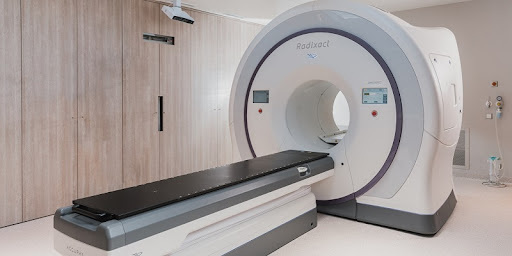Physical fitness relies on aerobic exercise, which has many health benefits. It improves cardiovascular health, weight management, and mood. In this article, we'll discuss the benefits of aerobic exercise and give examples to encourage readers to start.
Cardiovascular Health Benefits of Aerobic Exercise
Aerobic exercise has long been acknowledged for its numerous health rewards, especially concerning the heart and blood vessels. Activities like water aerobics or traditional aerobic exercises like jogging and cycling can bolster the cardiovascular system.
Lowering Blood Pressure
Consistent participation in aerobic activities is a well-known strategy to manage and reduce high blood pressure. You can actively combat high blood pressure by incorporating aerobic step exercises into your weekly regimen. Lower blood pressure, in turn, substantially decreases the potential risks of developing complications like heart disease or stroke.
Strengthening the Heart
Exercise keeps the heart healthy and functioning, just like other muscles. Heart strength from aerobic exercise helps pump blood to body parts. Aerobic exercises like swimming and running strengthen your heart, lowering your resting heart rate and indicating a healthier cardiovascular system.
Boosting Blood Circulation
Good circulation is paramount for overall health, ensuring all organs and tissues receive oxygen and nutrients. Activities, especially water aerobics exercises, enhance circulation, promoting efficient nutrient and oxygen distribution. This improved circulation nourishes the body and supports eliminating waste products, including harmful toxins.
Weight Management Through Aerobic Exercise

The battle against unwanted weight gain finds a reliable ally in aerobic exercises. Whether you're performing aerobic step exercises or exploring other aerobic exercise examples, the road to effective weight management is paved with consistent and dedicated effort.
Accelerated Calorie Consumption
Aerobic activities, by their nature, demand energy. This energy requirement translates to burning calories, an essential aspect of weight loss. Blending regular aerobic activities like water aerobics exercises with a nutritious diet can yield impressive results for individuals with weight loss objectives. Energy expenditure during these exercises can aid in creating the necessary calorie deficit for weight reduction.
Enhanced Metabolic Rate
Metabolism plays a central role in determining how efficiently our bodies burn calories. Regular aerobic workouts, whether they're traditional runs or aerobic step exercises, give a notable boost to metabolism. This metabolic uptick doesn't just end when the training concludes; the body continues to burn calories at an elevated rate even afterward. This post-exercise calorie burn often termed the ‘afterburn’ effect, can be valuable in weight management.
Enhanced Lung Function
Aerobic exercise pushes our respiratory system to adapt and become more efficient. When we engage in activities like cycling, jogging, or water aerobics exercises, our bodies demand more oxygen, challenging our lungs to meet this increased need.
Greater Lung Capacity
Regular aerobic activities can significantly enhance lung capacity. For example, those who consistently participate in water aerobics exercises might notice that they get out of breath slower than before. An increased ability to hold air means our lungs can distribute more oxygen to our muscles during physical activities, allowing us to exercise for extended periods without fatigue.
Respiratory Muscle Strengthening
As lifting weights strengthens our arms and legs, aerobic activities strengthen our breathing muscles. Cycling and jogging strengthen our diaphragm and intercostals unintentionally. As muscles support, breathing becomes more efficient.
Mental Health Benefits
Physical activity has always been associated with a fit body. However, the advantages of regular aerobic exercise go beyond just physical health; they deeply influence our mental well-being, too. Every time you step onto that aerobic step exercises platform or take a brisk walk in the park, you do wonders for your mind.
Stress reduction
Work, relationships, and personal issues cause stress in everyone. Step aerobics reduce stress. The "feel-good" hormone endorphins are released by exercise. Chemicals regulate mood and reduce stress and anxiety.
Improved Sleep
Sleep is essential to our health, and disruptions can cause many problems. Regular aerobic exercise, like brisk walking or swimming, can improve sleep. A tired body from exercise sleeps better and rejuvenates.
Cognitive Function
Like other organs, the brain needs exercise. Aerobic exercise increases brain blood flow and neural connections. This can boost memory, attention, and processing speed. Exercise also reduces the risk of cognitive-impairing diseases.
Musculoskeletal Benefits

Our musculoskeletal system, comprising bones and muscles, plays a crucial role in movement and support. Aerobic exercise, whether traditional jogging or modern aerobic step exercises, has shown remarkable benefits for this system.
Bone Density
Our bone density naturally decreases as we age, making us more susceptible to conditions like osteoporosis. However, weight-bearing aerobic activities can counteract this decline. Activities like running or jumping, even aerobic step exercises, place a controlled amount of stress on our bones, stimulating them to strengthen and increase in density.
Muscle Tone and Strength
A toned body is often considered aesthetically pleasing. But beyond appearances, strong muscles support our joints, improve posture, and reduce the risk of injuries. Examples of Aerobic exercises, especially swimming or water aerobics exercises, challenge various muscle groups.
Engaging in these exercises regularly ensures that our muscles remain active, toned, and firm. Whether aiming for a sculpted look or simply wanting to stay agile, incorporating aerobic activities can significantly benefit your musculoskeletal system.
Social and Motivational Aspects of Aerobic Exercise
Aerobic exercise transcends the bounds of mere physical enhancement. It serves as a conduit for social connections and developing crucial life habits.
Social Interaction
Aerobic activities, especially in groups, have a unique way of bringing people together. Picture this: a group of fitness enthusiasts, united by their passion, participating in water aerobics exercises at a local pool. The shared experience, mutual motivation, and collective rhythm create an atmosphere ripe for interaction.
Over time, these acquaintances can bloom into friendships, turning simple exercise routines into joyous gatherings. Beyond traditional settings, aerobic exercise examples like group running or group cycling events also foster this community spirit, allowing individuals to connect over shared goals and milestones.
Routine and Discipline
Committing to aerobic activity is robust. Adding aerobic step exercises to your morning routine or taking a weekly water aerobics class goes beyond fitness. You're also creating a daily routine. Regularity has repercussions.
Staying consistent with exercise develops lifelong discipline. Regular aerobic workouts improve personal and professional life by encouraging dedication to work deadlines and personal commitments.






